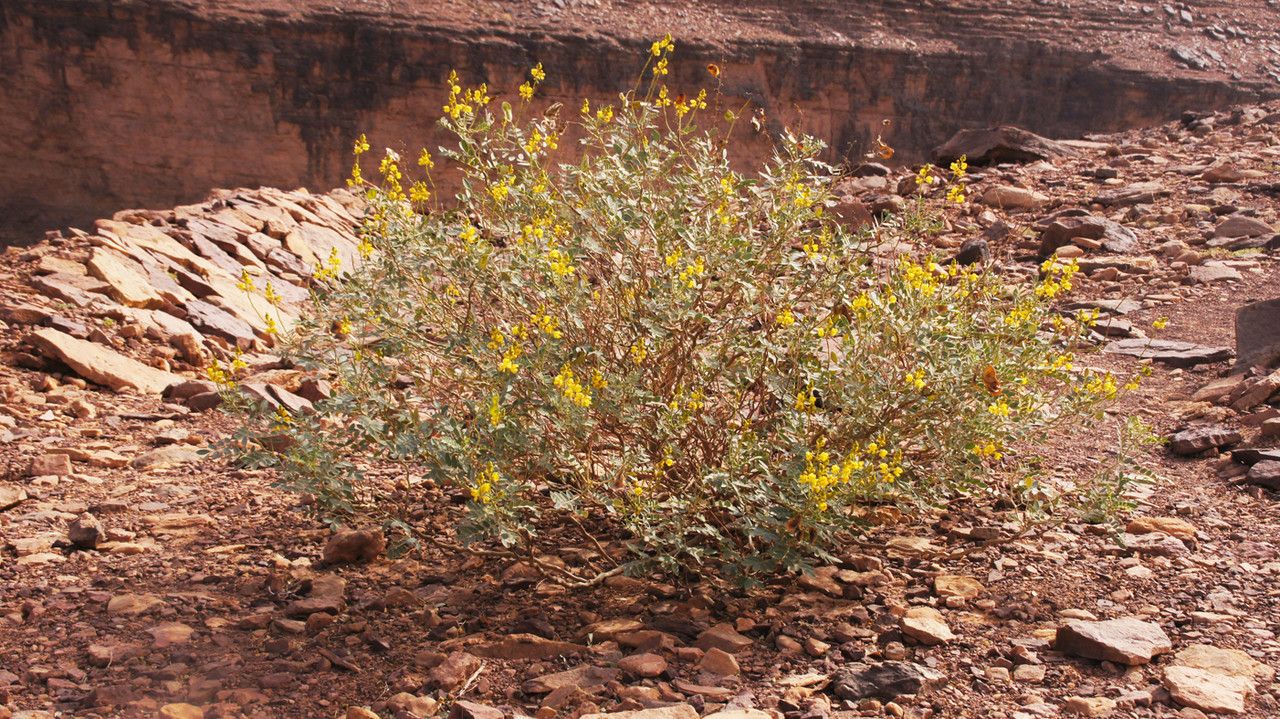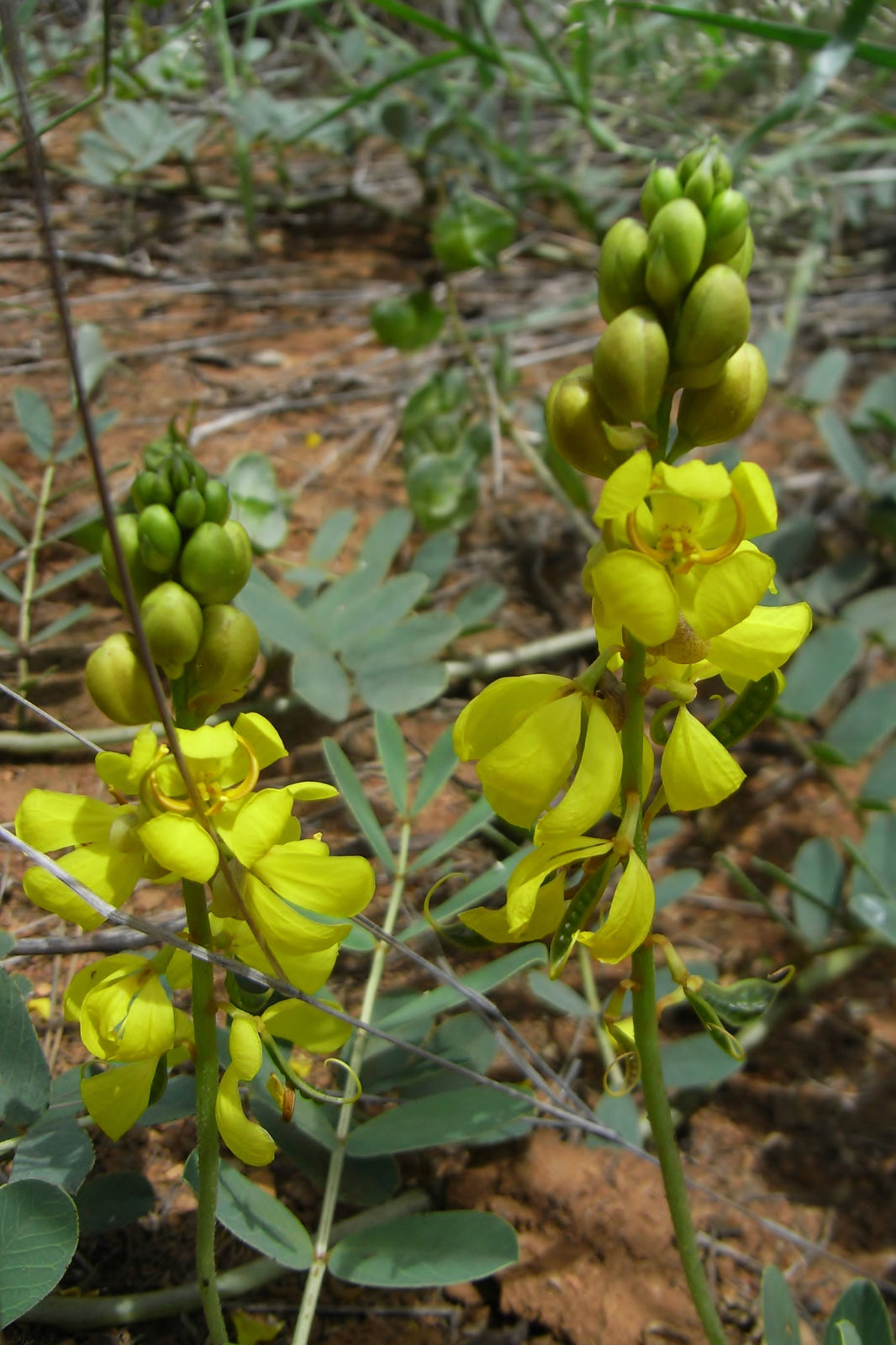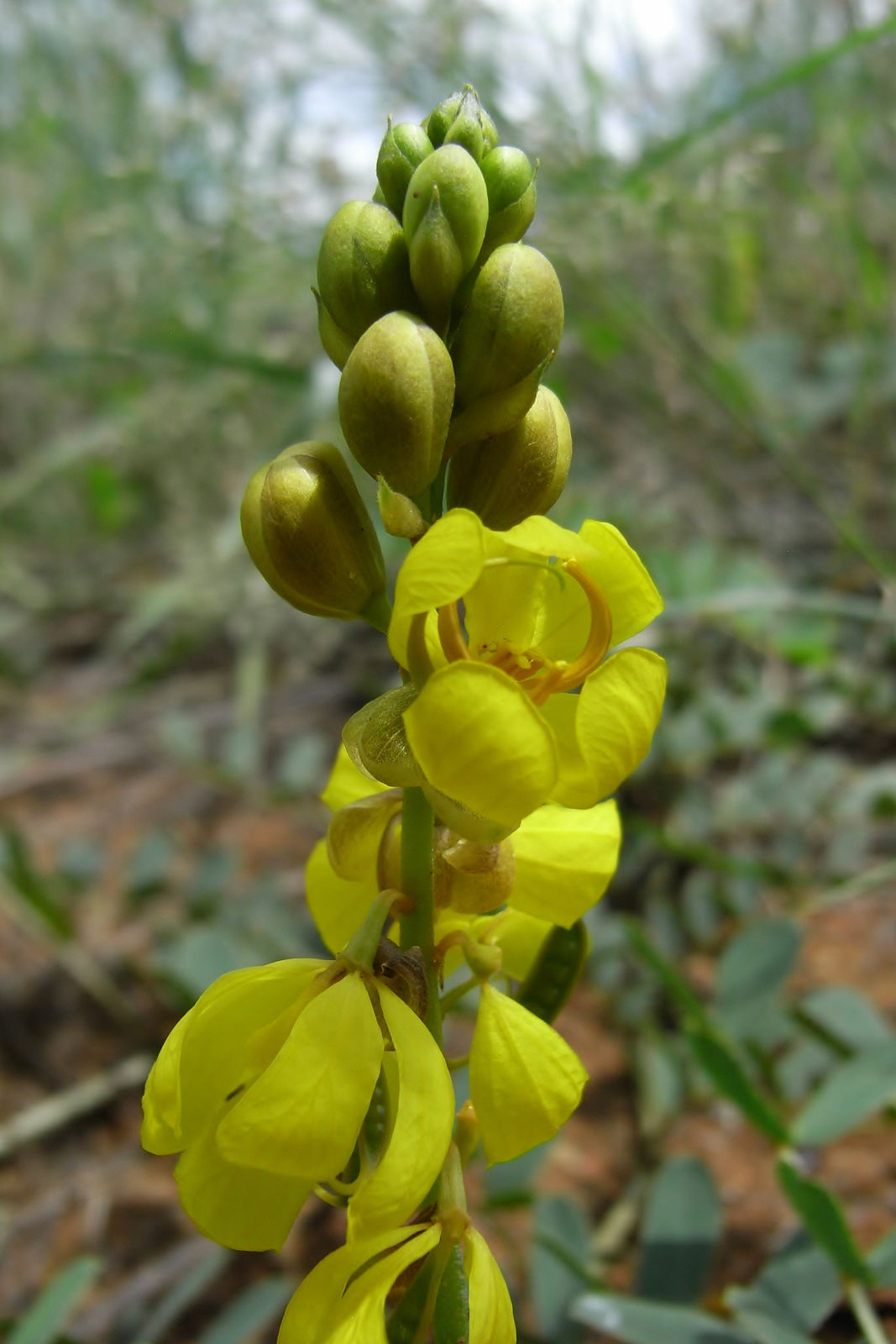Senna
senna italica
Also known as: ["Cassia italica","Senna italica var. semna"]
Overview
A species of flowering plant in the family Fabaceae, native to tropical regions.
Benefits & Perks
["wildlife attractant (bees, butterflies, birds)","drought tolerant"]
Botanical Classification
| Phylum: | Magnoliophyta |
| Class: | Magnoliopsida |
| Order: | Fabales |
| Family: | Fabaceae |
| Genus: | Senna |
| Botanical Name: | Senna italica |
Plant Characteristics
Basic Information
- Category: Flowers
- Suitable Location: outdoor garden in a sunny, open area
- Suitable For:
- Is Weed: No
- Allergenicity: low
Environmental Needs
- Climate: {"temperatureRange":"10–35°C"}
- Hardiness: {"zones":"9–11"}
- Misting: rarely required, only if ambient humidity is very low
- Drainage: Fast-draining to prevent waterlogging.
- Soil Type: Well-draining, sandy loam with some organic matter.
Maintenance Level
- Maintenance Level: moderate
- Toughness Level: moderate
- Pruning Frequency: Annually in late winter or early spring; light pruning can be done as needed.
- Pruning Intensity: Moderate; remove up to one-third of the plant if overgrown.
Care Details
Ideal Sunlight Coverage:
Full sun (6–8 hours of direct sunlight daily); tolerates partial shade in intense heat.
Sunlight Tolerance Tips:
Acclimate gradually if moving from shade to sun; protect from harsh midday sun in hot climates; ensure good air circulation to prevent fungal issues.
Care Requirements
Care Difficulty
moderatemoderate
Sunlight
full sun
Rotate plant for even growth; use sheer curtains to filter intense light; avoid sudden light changes.
Watering
every 7–10 days during active growth, reduce in winter
Water thoroughly but infrequently; ensure proper drainage; adjust based on season and growth stage.
Soil
well-draining, sandy or loamy soil
pH: Slightly acidic to neutral (pH 6.0–7.0).
Use a cactus mix as a base; avoid heavy clay soils; ensure pots have drainage holes.
Temperature
Warm temperatures (65–85°F or 18–29°C); thrives in tropical and subtropical climates.
Avoid sudden temperature fluctuations; protect from drafts; maintain consistent warmth during active growth.
Fertilizing
every 4–6 weeks during growing season
Fertilize only when actively growing; flush soil occasionally to prevent salt buildup; use a balanced formula.
Propagation
Methods
Stem cuttings or seed; stem cuttings are faster and more reliable.
Step-by-Step Propagation Guide
- Take a 4–6 inch cutting.
- Remove lower leaves.
- Dip in rooting hormone.
- Plant in medium.
- Keep moist and warm.
Best Time: Spring or early summer when the plant is actively growing.
Environment
Warm (70–75°F or 21–24°C), humid, and bright but indirect light.
Medium
Well-draining mix of perlite and peat moss or cactus potting mix.
Hormone
Rooting hormone is recommended to speed up root development.
Timeline
Roots develop in 2–4 weeks; new growth appears in 6–8 weeks.
Tools Needed
Pruning shears, rooting hormone, small pots, well-draining medium.
Quick Tips
Use healthy, non-flowering stems; maintain consistent moisture; provide bottom heat if possible.
Pruning & Repotting
Pruning Guide
Method
Use clean cuts just above a leaf node or branch junction; avoid cutting into old wood.
Pruning Plan
Prune to maintain shape, encourage bushier growth, and remove dead or diseased parts.
Tools
Pruning shears, sterilizing solution, gloves.
Checklist
Sterilize tools; prune during dormancy; remove dead/diseased parts; shape as desired.
Repotting Guide
Best Season
Spring, before the active growing season begins.
Pot Size
One size larger pot (e.g., +2 inches in diameter); ensure good drainage.
Method
Remove plant gently; trim roots if necessary; place in a slightly larger pot with fresh soil; water lightly.
Suggestions
Repot every 2–3 years or when roots fill the pot; beneficial for growth and health.
Checklist
Check root bound status; prepare new pot with drainage; use fresh soil mix; water after repotting.
Advanced Care Tips
Watering Mastery
Watering Checklist
Check soil moisture; water deeply; ensure drainage; adjust seasonally.
How to Apply Water Properly
Water at the base of the plant, ensuring moisture reaches the root zone; allow excess water to drain away; water early in the morning or late in the evening to minimize evaporation.
Watering Schedule Tips
Water deeply once the top inch of soil is dry; reduce frequency in winter to prevent root rot.
Soil Improvement
Add perlite or coarse sand for drainage; incorporate compost for fertility; ensure good aeration.
Temperature Stress Management
Signs of Temperature Issues
Wilting, yellowing leaves, or stunted growth in cold; leaf scorch or bud drop in excessive heat.
Cold Stress
Growth slows or halts; leaves may turn yellow or drop; risk of frost damage in temperatures below 50°F (10°C).
Solution: Move to a warmer location; provide frost protection if outdoors; reduce watering in cold periods.
Hot Stress
Leaves may scorch, wilt, or drop; growth may slow; increased water demand.
Solution: Provide partial shade during peak heat; increase watering frequency; ensure good air circulation.
Fertilizing Guide
Fertilizing Checklist
Check growth stage; dilute fertilizer correctly; apply to moist soil; avoid contact with foliage.
Fertilizing Method
Use a balanced liquid fertilizer diluted to half strength every 4–6 weeks during the growing season (spring and summer); avoid fertilizing in winter.
Common Problems & Solutions
Toxicity Warning
Cats
Slightly ToxicCats are sensitive to the laxative effects of Senna italica. Ingestion can cause gastrointestinal distress, and chronic exposure may result in malnutrition due to nutrient malabsorption.
⚠️ Symptoms:
🌿 Toxic Parts:
⚡ Toxic If:
if eaten
Dogs
Slightly ToxicIn dogs, ingestion of Senna italica can cause mild to moderate gastrointestinal upset due to its laxative properties. Prolonged or excessive consumption may lead to dehydration and electrolyte disturbances.
⚠️ Symptoms:
🌿 Toxic Parts:
⚡ Toxic If:
if eaten
Humans
Slightly ToxicSenna italica contains anthraquinone glycosides, which can act as laxatives when ingested in sufficient quantities. Overconsumption may lead to gastrointestinal irritation and electrolyte imbalances due to prolonged laxative effects.
⚠️ Symptoms:
🌿 Toxic Parts:
⚡ Toxic If:
if eaten
Frequently Asked Questions
Q: Is Senna italica toxic to pets?
A: Reliable information on toxicity to pets is not available.
Q: How often should Senna italica be watered?
A: Water moderately, allowing the soil to dry between waterings.
Q: Does Senna italica attract wildlife?
A: Yes, it attracts bees, butterflies, and birds.
Quick Reference
| Family: | Fabaceae |
| Care: | moderate |
| Light: | full sun |
| Water: | every 7–10 days during activ |
Get Expert Care Tips
Download the Plantious app for personalized care reminders and plant identification!
Google Play App Store








